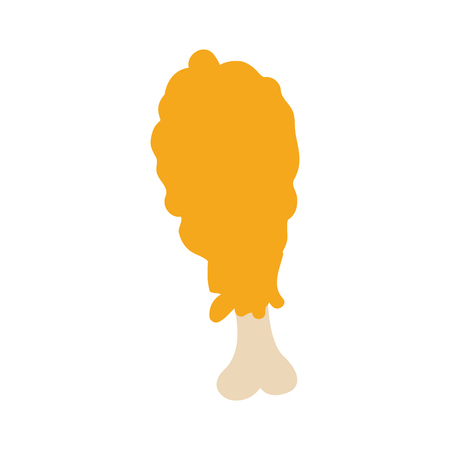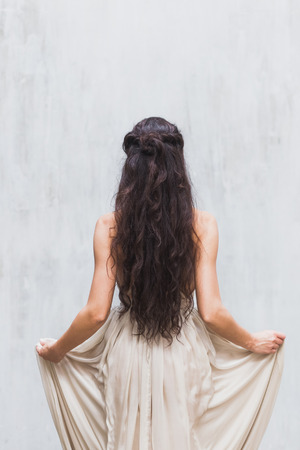Understanding Indian Hair Types and Common Hair Concerns
India’s vibrant diversity is reflected in the beautiful range of hair types found across the country. From silky straight locks in the North, to wavy strands in the West, and thick, curly tresses common in the South and East, Indian hair textures are as varied as its cultures. This rich variation is influenced by genetics, climate, lifestyle, and traditional grooming practices unique to each region. However, despite these differences, there are certain hair concerns that many Indians share. Hair fall remains a major worry for both men and women, often triggered by nutritional deficiencies, stress, pollution, and hard water. Thinning hair is increasingly observed among urban populations due to changing lifestyles and dietary habits. Another common issue is premature greying, which not only affects confidence but also signals underlying health or nutritional imbalances. Understanding these unique hair characteristics and challenges is essential before exploring how key nutrients like iron, protein, and vitamins play a vital role in maintaining strong and healthy hair for Indians.
2. Why Iron is Crucial for Healthy Indian Hair
Iron plays a pivotal role in maintaining the health and vibrancy of Indian hair. As one of the key minerals responsible for oxygen transport in blood, iron ensures that hair follicles receive adequate nourishment to support growth and strength. In the context of Indian diets and lifestyles, understanding the importance of iron becomes even more significant.
Delving into Iron’s Role in Hair Growth
Hair follicles are among the most rapidly dividing cells in our body, and they require a consistent supply of oxygen-rich blood. Iron is a core component of hemoglobin, which transports oxygen from the lungs to every part of the body—including the scalp and hair roots. Without sufficient iron, hair follicles become deprived of oxygen, leading to weakened strands and increased hair fall, a concern frequently voiced within the Indian community.
The Impact of Iron Deficiency on Hair Strength
Low iron levels directly impact the hair’s life cycle. A deficiency can cause hair to enter the ‘telogen’ or resting phase prematurely, resulting in excessive shedding. Over time, this may lead to thinning or patchy baldness—a common issue noticed especially among Indian women due to factors like menstruation, pregnancy, and vegetarian diets.
Why Iron Deficiency is Especially Prevalent in Indian Diets
Despite India’s rich culinary diversity, iron deficiency remains a widespread challenge. This can be attributed to several cultural and dietary factors:
| Factor | Explanation |
|---|---|
| Predominantly Vegetarian Diets | Many Indians consume plant-based foods where iron (non-heme) is less easily absorbed compared to animal sources (heme). |
| High Consumption of Tea & Coffee | Tannins present in these beverages inhibit iron absorption when consumed with meals. |
| Lack of Iron-Rich Food Pairings | Vitamin C enhances non-heme iron absorption but is not always included with iron-rich meals. |
| Frequent Fasting & Religious Practices | Cultural fasting traditions sometimes reduce overall nutrient intake, impacting iron levels. |
For Indians seeking luscious locks, it’s essential to incorporate iron-rich foods like spinach (palak), lentils (dal), jaggery (gur), and fortified cereals into daily meals. Pairing these with vitamin C sources such as amla (Indian gooseberry) or lemon boosts absorption. Understanding and addressing these unique dietary challenges helps foster healthier hair and prevents avoidable hair concerns rooted in nutritional deficiencies.

3. Power of Protein: Building Blocks for Vibrant Hair
Protein is the very foundation of our hair – after all, each strand is made up of keratin, a tough and resilient protein. For Indians, whose hair is often exposed to diverse weather conditions and styling rituals, maintaining optimal protein levels is especially important for strength, shine, and volume. A lack of protein can make hair weak, brittle, and more prone to breakage.
Traditional Indian Protein Sources
Indias culinary heritage offers a rich variety of protein-packed foods. Dal (lentils), chana (chickpeas), rajma (kidney beans), dahi (curd/yogurt), paneer, and tofu are classic vegetarian sources enjoyed across regions. For non-vegetarians, eggs, fish, and lean chicken are excellent additions. Even nuts like badam (almonds), moongphali (peanuts), and seeds such as til (sesame) or flaxseed provide a protein boost with healthy fats.
Tips to Amp Up Your Daily Protein Intake
- Add a bowl of dal or sprouts to your lunch or dinner thali.
- Swap regular roti with besan chilla or moong dal cheela for breakfast.
- Sneak in paneer cubes in your sabzi or salads.
- Munch on roasted chana or peanuts during chai breaks.
- If you eat eggs, enjoy a boiled egg as an evening snack or in curry form for extra protein punch.
Cultural Wisdom Meets Modern Nutrition
A mindful blend of traditional Indian ingredients with contemporary meal planning ensures that your hair receives the essential protein it needs. By celebrating our roots and making small daily changes, every Indian can nourish their mane from within – unlocking naturally vibrant hair that’s ready for every festive selfie!
Vitamins Vital for Luscious Locks
When it comes to flaunting glossy, healthy hair, vitamins play a pivotal role in the Indian context. Our diverse cuisine and traditional food habits offer a treasure trove of vitamin-rich foods that are essential for optimal hair health. Let’s unravel the must-have vitamins for your tresses and how you can find them in regional Indian superfoods.
Essential Vitamins & Their Hair Benefits
| Vitamin | Hair Health Benefit | Popular Indian Sources | Regional Superfoods |
|---|---|---|---|
| B12 | Prevents hair loss, supports scalp health | Dahi (curd), paneer, eggs, milk | Punjabi lassi, South Indian curd rice |
| D | Stimulates hair follicles, prevents thinning | Sunlight exposure, fortified milk, fish | Bengali macher jhol (fish curry), Goan seafood dishes |
| E | Improves circulation to scalp, adds shine | Nuts (almonds, peanuts), seeds (sunflower), spinach | Maharashtrian poha with peanuts, Gujarati undhiyu with seeds |
| A | Promotes sebum production for moisturised scalp | Carrots, sweet potatoes, green leafy vegetables | Kerala avial (mixed vegetable stew), Rajasthani gatte ki sabzi with greens |
Boosting Vitamin Intake the Desi Way!
Your daily dal-chawal or roti-sabzi is already a great foundation! For an extra boost:
- Add a handful of roasted peanuts or almonds as a snack for Vitamin E.
- Savour sunshine by spending 15 minutes outdoors daily—our tropical climate is perfect for natural Vitamin D synthesis.
- Munch on seasonal carrots and leafy saag during winters for a Vitamin A surge.
- Include curd or buttermilk with meals to up your B12 intake.
Desi Tip:
Pairing these vitamin-rich foods with healthy fats (like mustard oil or ghee) enhances absorption and gives your mane that festival-ready shine!
5. Traditional Indian Diets: Bridging Nutritional Gaps
Indian cuisine is a vibrant tapestry of flavours and traditions, reflecting the country’s rich cultural heritage. However, while traditional Indian diets are delicious and diverse, they can sometimes inadvertently contribute to nutritional deficiencies that impact hair health, especially when it comes to iron, protein, and essential vitamins.
Common Gaps in Traditional Indian Eating Patterns
Many Indian households favour vegetarian or predominantly plant-based diets. While these are packed with fibre and antioxidants, they may lack bioavailable iron and high-quality protein sources needed for strong, healthy hair. Staples like rice, roti, dal, and sabzi sometimes fall short on delivering enough heme iron (the type best absorbed by our bodies), especially in regions where red meat or seafood is seldom consumed. Additionally, vitamin B12—crucial for hair growth—is mostly found in animal products and thus often deficient in vegetarian diets.
Smart Tips to Boost Nutrient Intake
- Add Vitamin C-Rich Foods: Enhance iron absorption from dals and green leafy vegetables by pairing them with lemon juice, amla (Indian gooseberry), or oranges.
- Embrace Diverse Protein Sources: Incorporate a mix of dals, paneer, curd, nuts, seeds, soya chunks, and even eggs if your diet allows.
- Mindful Cooking Methods: Avoid overcooking veggies as it reduces their vitamin content; opt for steaming or light sautéing.
- Consider Fortified Foods: Choose atta (wheat flour), breakfast cereals, or milk fortified with vitamins like B12 and D.
Cultural Adaptations for Better Hair Health
Savouring traditional favourites doesn’t mean missing out on key nutrients. Try swapping white rice with iron-rich millets like ragi or bajra. Add sprouted pulses and drumsticks to curries for an extra boost of protein and micronutrients. And don’t forget about seasonal fruits like guava or papaya to up your vitamin intake the desi way! By making small yet mindful tweaks rooted in everyday Indian food habits, you can nourish your hair from within while celebrating your regional culinary identity.
6. Simple Nutrition Swaps & Festive Tips for Stronger Hair
Quick and Easy Nutrition Hacks for Busy Indian Lifestyles
Life in India is vibrant, full of festivals, family gatherings, and busy routines. But maintaining healthy hair doesn’t need to be a challenge, even during the most hectic celebration seasons! Here are practical ways to boost your iron, protein, and vitamin intake—without missing out on any festive fun.
Iron-Rich Festive Foods
Swap white rice with brown rice or bajra (pearl millet) in your biryanis and pulaos. Add palak (spinach), methi (fenugreek), and drumstick leaves to dals or parathas for an iron boost. Don’t forget a squeeze of lemon over your sabzi—it helps your body absorb plant-based iron more efficiently!
Protein Power for Every Plate
Include dals, chana (chickpeas), rajma (kidney beans), or paneer in your festive thalis. For non-vegetarians, opt for grilled fish or chicken tikka as starters instead of deep-fried snacks. Even simple additions like roasted peanuts or sprouted moong salad can up your protein game during celebrations.
Vitamin-Loaded Desi Delights
Add colour to your plate with seasonal veggies like carrots, beets, and pumpkin—rich in vitamins A and C. Enjoy citrus fruits such as oranges and amla (Indian gooseberry) in salads or as fresh juices between festivities. Top your raitas with chopped coriander and mint for an extra vitamin kick.
Festive-Friendly Eating Habits
During Navratri, Diwali, or Eid gatherings, try mini-meals to avoid overindulgence and maintain balanced nutrition. Prepare homemade laddus using nuts and seeds for natural protein and iron. Drink coconut water or fresh lime soda instead of sugary soft drinks to stay hydrated and support vitamin absorption.
Smart Snacking On-the-Go
Keep roasted makhana (fox nuts), til chikki (sesame brittle), or mixed dry fruits handy when travelling to relatives’ homes. These snacks are not only festive but also packed with hair-loving nutrients that fit perfectly into your busy Indian lifestyle.
With these simple swaps and festive-friendly tips, you can enjoy every celebration while giving your hair the nourishment it needs—keeping it strong, shiny, and ready for all those selfie moments!
7. Blending Modern Care with Ancient Wisdom
Indian hair care traditions are a vibrant tapestry woven from both ancient Ayurvedic remedies and the latest scientific advancements. In today’s fast-paced world, many Indians are rediscovering the value of combining these two worlds for optimal hair health. Contemporary science highlights the vital roles that iron, protein, and vitamins play in strengthening hair follicles, preventing hair fall, and boosting overall hair vitality. At the same time, age-old Indian practices—like oiling with coconut or amla oil, using henna for natural conditioning, or applying masks made from yogurt and fenugreek—continue to be trusted solutions in Indian homes.
Creating a Balanced Hair Care Routine
To truly nourish your locks, it’s important to blend these approaches seamlessly. Start by ensuring your diet is rich in iron (found in leafy greens like palak and lentils), protein (from dals, paneer, and eggs), and essential vitamins (like B12 and biotin). Complement this nutritional foundation with traditional rituals: regular champi (head massage) improves blood circulation, while using herbal rinses—such as neem or hibiscus—keeps the scalp healthy and dandruff-free.
The Indian Way: Holistic & Modern
Embracing both modern supplements when needed (after consulting with your doctor) and homegrown wisdom creates a holistic routine that respects both scientific research and cultural heritage. Don’t shy away from trying out dermatologist-recommended products if you’re facing issues like severe hair fall; however, also cherish the comfort of nani maa ke nuske (grandmother’s remedies) passed down through generations.
Your Signature Blend
Ultimately, every Indian’s hair journey is unique—whether you’re styling for Diwali parties or keeping it simple for everyday temple visits. By blending contemporary knowledge with cherished Indian customs, you create a personalised regime that celebrates beauty in all its festive hues. Let your hair reflect both modern innovation and timeless tradition—a true testament to India’s colourful spirit!

